PHEVs are fast becoming some of the most important cars on our roads as more of us switch from pure combustion to electrified power. These are our favourites
The UK company car market is in the midst of a seismic shift.
The adoption of the latest WLTP emissions testing standard, combined with another tightening of CO2-based UK company car tax rules, has really marginalised the suitability of conventional petrol- and diesel-powered cars for fleet use and shifted the spotlight squarely and unflinchingly onto the plug-in hybrid.
As many company car drivers will have already discovered to their cost, if you want to continue paying anything like the same benefit-in-kind (BIK) tax on a company car in 2021 as you have in past, the only way to do it – if you haven’t already – is to move out of a petrol or diesel car and into a PHEV.
These are the cars you should be considering for that big move.
BMW’s competitors have followed its lead so many times when seeking success in the UK fleet market over the past few decades. It makes perfect sense, then, that BMW was the first premium brand to offer the market a really convincing plug-in hybrid executive option in the shape of the previous 330e, and that it should continue to lead the field with the current one.
The latest 330e combines a 2.0-litre turbocharged petrol engine with an electric drive motor mounted upstream of the gearbox, making it handle and behave much like any other G20-generation 3 Series. It imposes a relative penalty on boot space compared with its conventionally powered siblings, but it’s unlikely that typical business users will notice the shortage, and cabin space is unharmed.
With up to 288bhp of combined electric and petrol urge, the 330e has a fleet turn of pace and its powertrain feels particularly responsive as well as slick-shifting. The weight of that hybrid powertrain can be detected only slightly, and only really in its occasionally permissive high-speed vertical body control. Most of the time, the 330e just feels like an agile, entertaining, first-rate 3 Series in its sporting driver appeal.
The 330e has a WLTP-certified electric-only range of 37 miles, putting it in the mid-range 10% BIK tax bracket for PHEV options for the 2020-21 tax year.
Save money with new 3 Series deals from What Car?
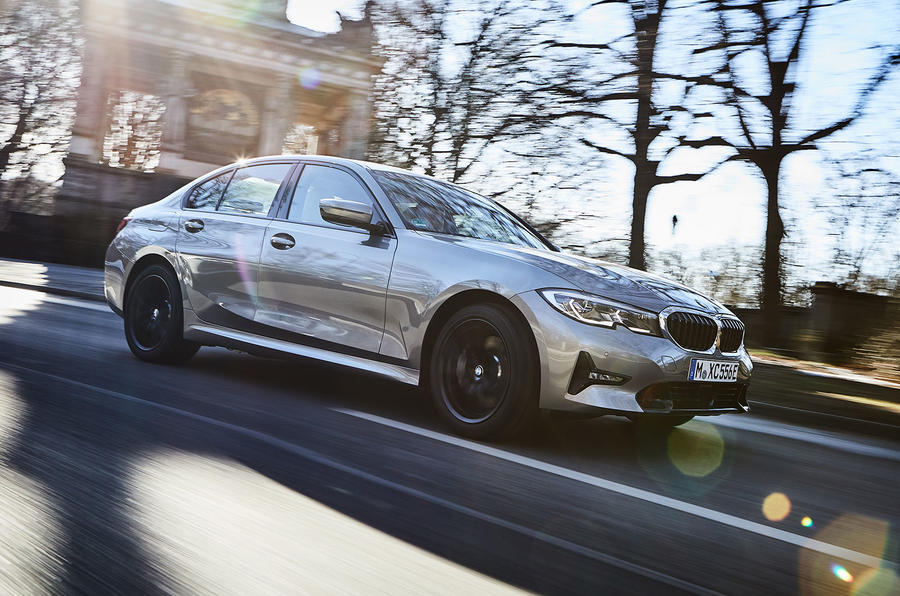
2. BMW 545e xDrive
We’ve driven the new 545e xDrive in prototype form only, but we still have every reason to believe the finished product will be one of the most desirable plug-in executives on the market when it arrives.
Unlike the 530e, this particular plug-in 5 Series mates BMW’s excellent 3.0-litre turbocharged straight-six engine with a secondary electric motor, resulting in a combined output of 388bhp and 442lb ft. A 12kWh battery enables an electric-only range of 34 miles. Add that to CO2 emissions of 38g/km, and the 545e is set to get a BIK tax rating of 10%.
Performance is pretty exceptional, and the transition from electric to petrol power is barely detectable. Acceleration is suitably potent, too. Put your foot down and the 545e will hit big speeds quickly and with very little in the way of discernable effort. And even though the car we drove had firmer M Sport suspension, ride comfort remains immaculate.
But the 545e’s trump card is that it can handle with such precision, energy and control – despite the additional weight of its electrified powertrain. The battery might be positioned towards the rear of the car, but the 545e nonetheless feels tremendously well balanced through faster corners, and its all-wheel drive system affords excellent traction. There’s every chance that this BMW will set a new benchmark for plug-in hybrid desirability and performance when it lands in the UK.
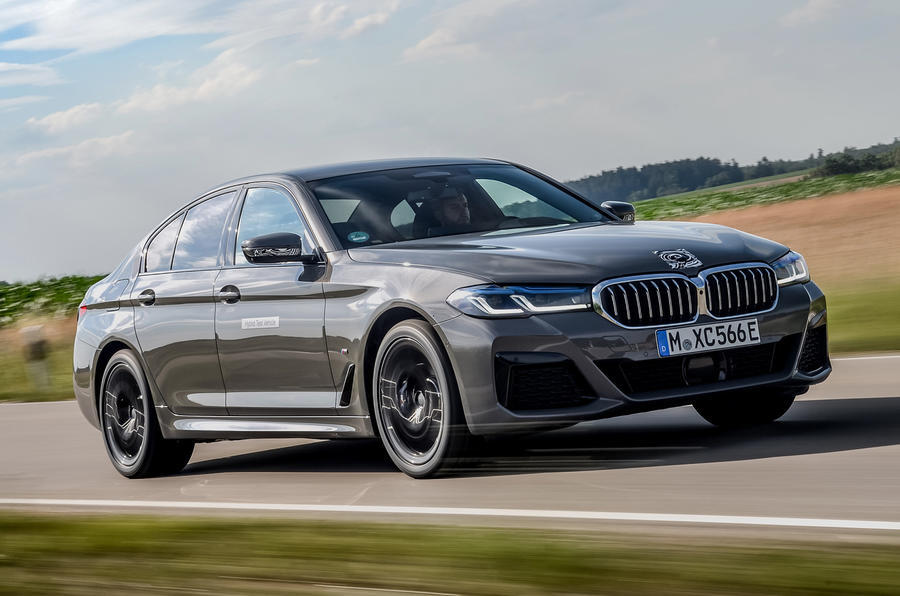
3. Volvo V90 Recharge T6
Volvo’s history of offering its estate cars with a plug-in hybrid powertrain stretches back further than most in the business, but the recent V90 Recharge T6 is without doubt its most successful attempt at the recipe, and an outstanding all-rounder.
The car’s modest 11.6kWh battery pack means some rivals will go further on electric power alone, and with 335bhp all in, neither is this the most powerful PHEV Volvo has made. But 36 miles of electric range and 335bhp mean the V90 T6 offers usable zero-emission range and, when you need, more than enough performance. Any while the Skoda Superb iV (see below) is less expensive and every bit as spacious inside, it lacks Volvo’s calling-card cabin ambience, which is among the most comfortable and relaxing around.
Another advantage the V90 T6 holds in the PHEV arena is that you can buy it with four-wheel drive, which isn’t true of most rivals from the premium German brands. Neither, for that matter, do Audi, BMW or Mercedes offer any of their full-sized, saloon-based, petrol-flavoured PHEV models in estate form (although Mercedes will sell you a diesel-hybrid E-Class Estate).
Save money with new V90 deals from What Car?
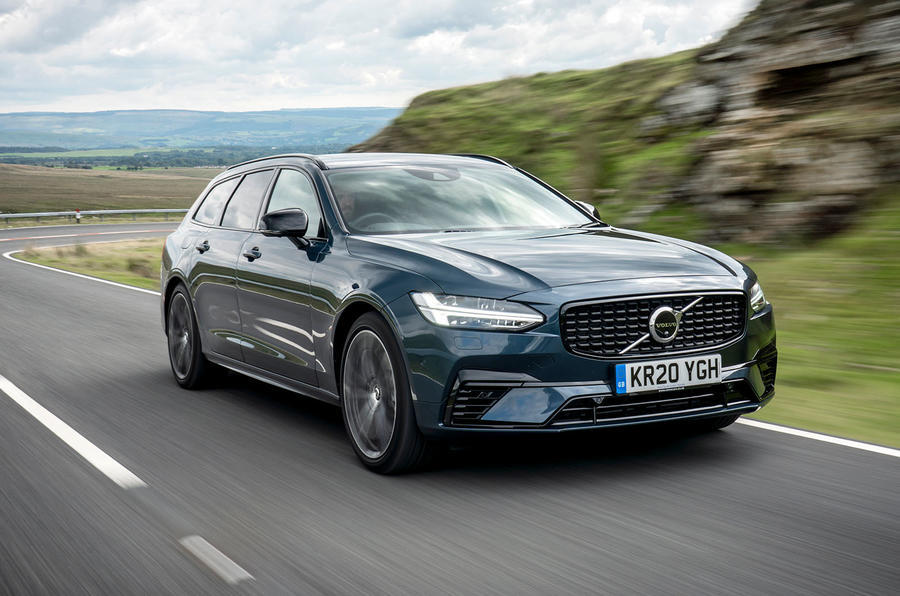
4. Skoda Superb iV
Skoda may have been busting a gut to change perceptions of its brand of late, but when the opportunity to bring some simple metal-for-the-money value to the plug-in hybrid market presented recently, it didn’t blink. It launched the new fleet-friendly Superb iV: a car that uses the engine and hybrid drivetrain with which drivers of the Volkswagen Passat GTE have become familiar over the past few years, but it packages them in a bigger family car that’s on offer at a lower list price. Simply clever, or just downright simple? Either way, it got our attention.
The Superb iV is surprisingly normal, considering it’s Skoda’s first plug-in hybrid. It doesn’t promise a particularly exciting driving experience, nor is it loaded with ritzy on-board technology or clothed in novel styling features in order to advertise its electrified credentials. It drives, ride and handles pretty much like any other Superb – which means it’s fairly softly sprung and comfort-oriented, and it’s easy-going rather than alert and energetic in its pedal responses.
The sheer size of any Superb ought to be a selling point for some, and the iV version is no different. Even though the battery eats into boot space a little, there’s still 485 litres available in the hatchback version and more still in the estate. Electric range is WLTP-rated at 35 miles for a 10% BIK tax rating.
If you’re looking for a roomy and cost-effective PHEV option that feels normal, rather than novel (read ‘a bit funny’), to drive, look no further.
Save money with new Superb deals from What Car?
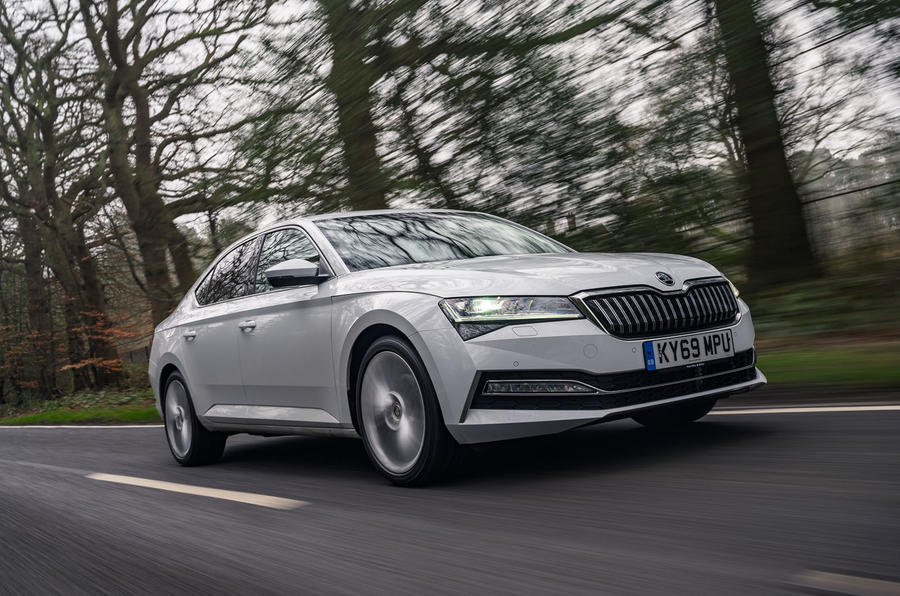
5. Mercedes-Benz E300de
Mercedes is the only player in the PHEV segment offering the combination of a diesel engine and electric propulsion. In the E300de, it also allows you to choose a saloon or estate bodystyle, which is another advantage that isn’t as widely available as you might imagine. For those reasons and others, the E300de makes the top half of this chart.
Electric range only just scrapes a WLTP-certified 30 miles, although that will depend on optional specification, so the car may well miss a 10% BIK banding if you opt for bigger wheels or a sportier trim. The fact that it’s easy to add options and turn this into a £50,000-plus prospect will also have an impact on its tax efficiency, of course.
In the real world, our testing suggests that 22-25 miles is as far as the E300de will run without rousing its four-pot diesel engine. And yet considering it has only four cylinders, its performance is impressively swift. Clever power management makes it easy to capture and recycle energy without realising you’re doing it, and the handling is quietly deft and fairly precise for what is, after all, a two-tonne car.
Mercedes’ hybrid battery installation does take up some boot space, but it doesn’t prevent the E300de being a supremely practical car – particularly in estate form – as well as a smart, desirable and real-world-efficient one.
Save money with new E-Class deals from What Car?
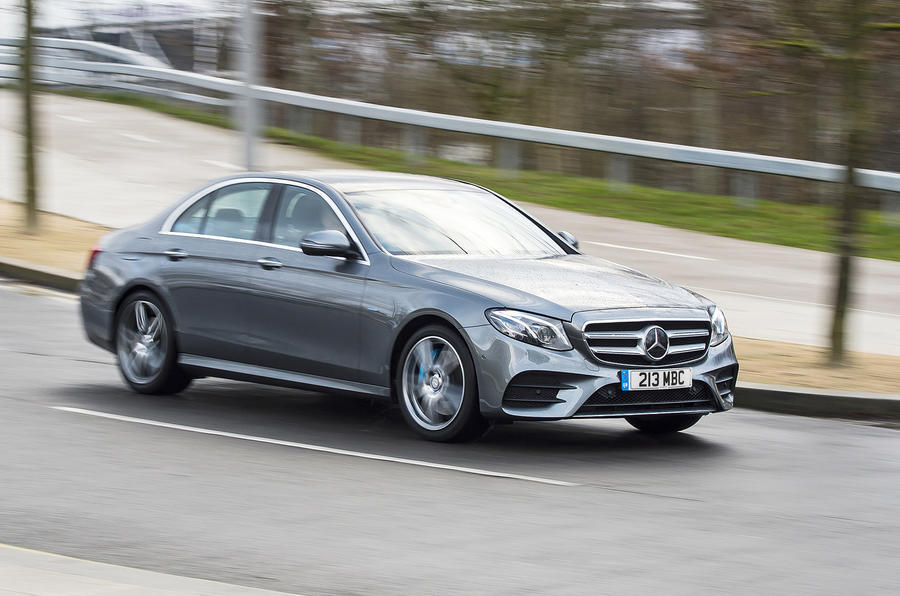
6. Mercedes-Benz C300e
As with the larger E-Class, you can have your plug-in C-Class with either a petrol or a diesel engine, and in saloon or estate bodystyles.
In C300e petrol estate guise, the plug-in C-Class makes for an impressive ownership proposition, if not one that will engage and excite keener drivers quite like a BMW 330e undoubtedly will. Still, there’s plenty to like here. On optional air suspension, its ride is comfortable and controlled, while its four-cylinder engine is smooth, refined and punchy enough to afford the Mercedes a decent turn of pace. It can be a bit too easy at times to tip over from electric to petrol power, but the switch itself is barely perceptible.
With a new 13.5kWh battery, the C300e’s electric range now stands at a class-competitive 34 miles. Combine that with WLTP-certified CO2 emissions of 37g/km and the plug-in C-Class slots comfortably into the 10% BIK tax bracket.

7. Volkswagen Passat GTE
After a temporary suspension of sales, the Passat GTE returned to the UK market last year in updated form. The design came in for a nip and a tuck, but the biggest changes were made under the surface.
The battery pack was enlarged to 13kWh, increasing the car’s electric range to as much as 36 miles on the WLTP cycle. The list price also fell, which will please the quarter or so of Passat buyers who will opt for the plug-in hybrid version. The powertrain itself consists of a reasonably refined turbocharged 1.4-litre petrol engine and an electric motor, with the two elements combining to deliver up to 215bhp to the front wheels through a six-speed dual-clutch automatic gearbox.
Admittedly, this isn’t the quickest or the most exciting PHEV to drive by the segment’s latest standards, but in terms of breadth of appeal and understated Volkswagen-brand desirability, it has plenty to recommend it.
Save money with new Passat deals from What Car?
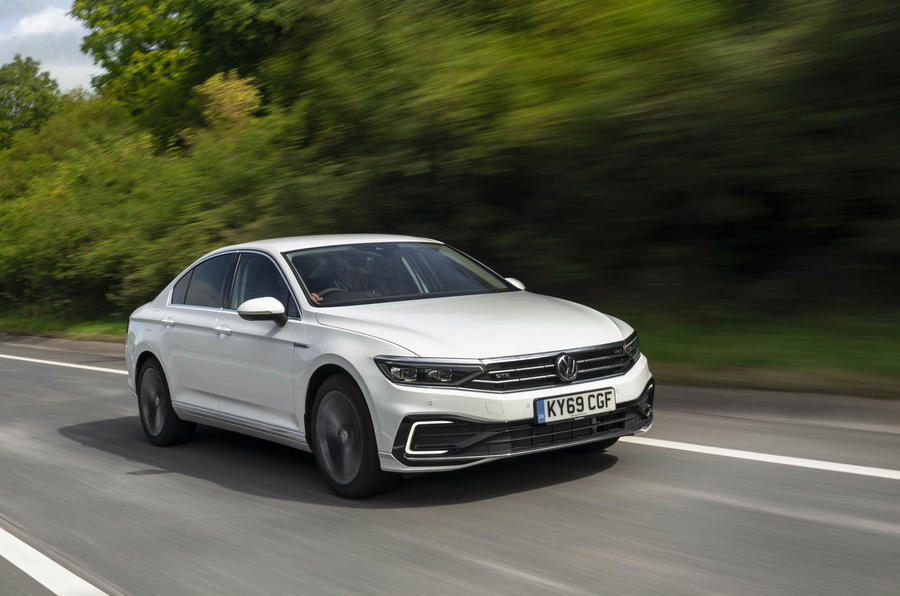
8. Volvo S60 Polestar Engineered
The exceptionally handsome Volvo S60 Polestar Engineered is a curious car. Part performance saloon, part fuel-sipping electrified eco machine, there are few cars on this list that come with an identity as seemingly conflicted as this.
Trick, manually adjustable Ohlins dampers provide the plug-in S60 range-topper an exceptionally well-damped ride and fantastic body control. Meanwhile, its electric motor and four-cylinder petrol engine (which is turbocharged and supercharged) work to lend it impressive straight-line oomph – courtesy of their combined 400bhp and 494lb ft.
With an electric range of 37miles, and a BIK rating of 10%, it has all the makings of a fantastic all-rounder. But for all its grunt and sophisticated ride comfort, it falters as a performance saloon because of its slightly aloof handling balance and uninspiring engine note. That twin-charged four-pot can be thirsty when driven hard, too. It therefore remains an interesting but ultimately niche choice.
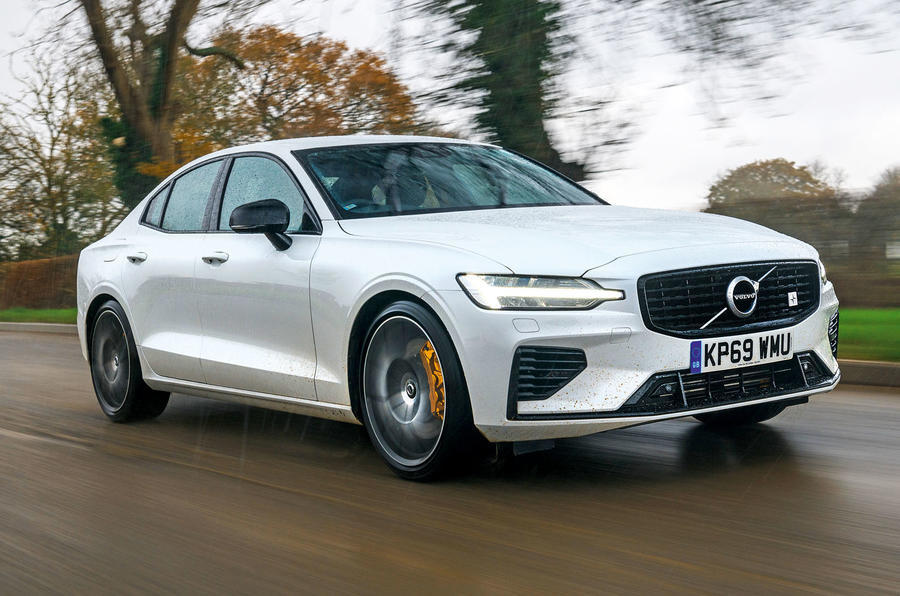
9. Peugeot 508 Hybrid 225
The PSA Group is now entering the plug-in hybrid market. This petrol-electric 508, available as a saloon or SW estate, is one of several PHEV efforts from sibling brands Peugeot, Citroën, Vauxhall and DS, all of which are hitting the market at roughly the same time. And all of them are powered in much the same way: a 1.6-litre turbocharged petrol motor sits up front and drives the front wheels with some electric motor assistance – and, in some cases although not in this particular one, a second electric motor sits between the rear wheels and makes for four-wheel drive and an extra slice of performance.
We marginally prefer the simpler, cheaper and more modest combination of one engine and one electric motor. In the 508 Hybrid, it makes for decent pace and drivability, as well 31 miles of WLTP range for a 10% BIK tax rating. The powertrain is at its best when you’re mooching around in no particular hurry. The combustion engine starts and stops very unobtrusively, and part-throttle drivability is good. Dig deeper for a quicker turn of speed and the powertrain’s slickness deteriorates a little, but outright acceleration is respectable enough, while selecting gears for yourself using the paddles helps calm down the occasionally hyperactive temperament of the hybrid system.
The interior is less roomy than that of some mid-sized saloons, but the back seats are usable enough for the kids, while the front is pleasant and a visually interesting environment. That, combined with the car’s stylishness, ought to take this particular 508 a reasonably long way.
Save money with new 508 deals from What Car?

Audi A6 55 TFSIe
We’re yet to drive the Audi A6 55 TFSIe, but it seems unlikely that it’ll disappoint on the grounds of comfort, refinement or performance. It shares its four-cylinder petrol engine and electric motor with the Q5 55 TFSIe, and given the fact that this powertrain is slick, smartly calibrated and surprisingly potent under the bonnet of the SUV, it seems fair to expect the same from its application in the plug-in A6.
Audi claims a WLTP electric-only range of 33 miles thanks to a 14.1kWh battery, and lab-tested CO2 emissions of 35g/km allow it to slot into the 10% BIK tax bracket.
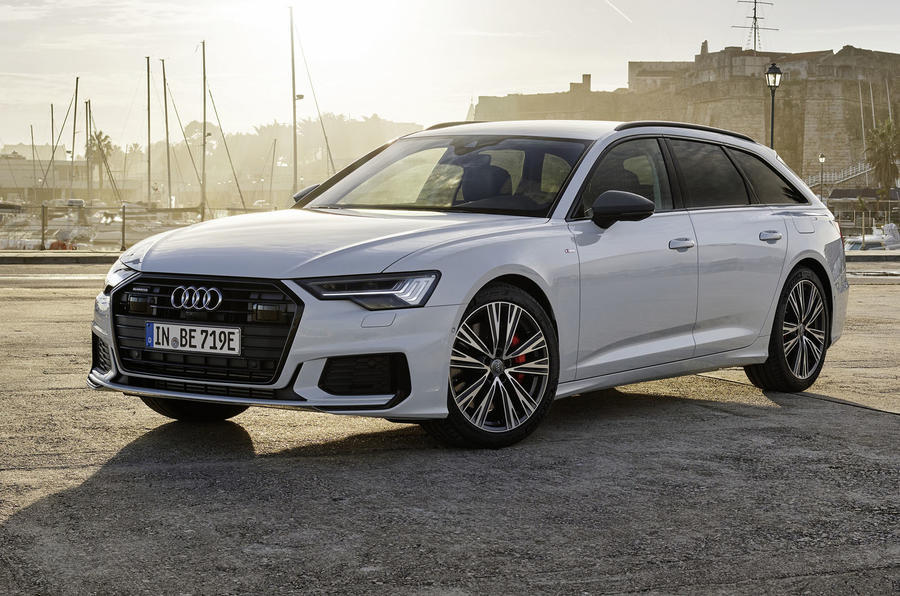
Source: Autocar

